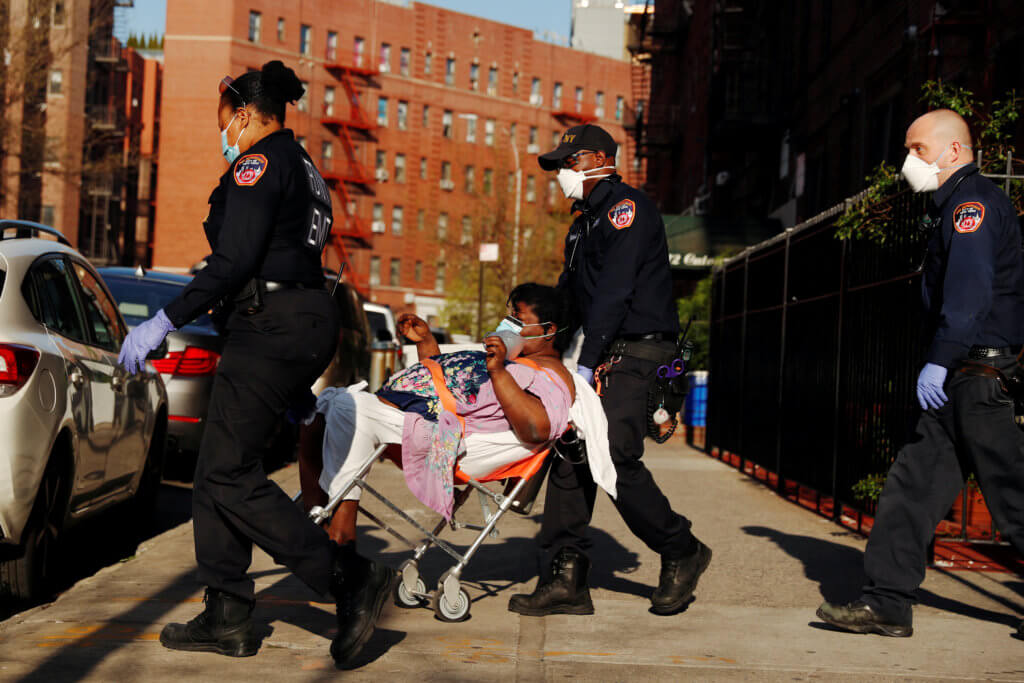BY WALTER S. ADLER
Over 14,000 New Yorkers have died so far during the COVID-19 pandemic. A lot of bravery, heroism and inter-agency cooperation has ensued for the worst four weeks of the pandemic. The virus is here and will be for some time. My EMS brothers and sisters will continue to help hold the front lines.
But when the coughing stops and the fevers cool, will the inequities be addressed? EMS workers need profession-wide protections. We need to be compensated in parity with policemen and with firefighters. We need leadership to bring the disparate sectors of the field together in common purpose to advocate for political action to resuscitate this field. For decades we have been there at critical moments of loss and terror, laying down our lives for our patients and their families.
NYC EMS workers have been both separate and unequal to all other city service workers for years in terms of wages, benefits and working conditions. Another challenge is the awkward segregation of the workforce into distinctive sectors with competing leadership. NYC’s 13,000 EMS workers are divided into four distinct deployment models with different funding channels, varying benefits, uniform colors, vehicle colors, conditions and levels of prestige — FDNY 911 Municipal, Voluntary Hospital 911, Private Interfacility Transport and Community Volunteers.
Compared to firefighters and policemen, EMS is highly revenue generating. While “saving lives,” EMS is also a multimillion-dollar industry. Every billable ambulance ride brings the city, private ambulance companies or hospitals between $500 to $4,000.
While providing significant revenue, the disparity in starting EMS salaries as compared with Fire Suppression and the NYPD is significantly lower. The starting NYPD salary is $42,500, and within 5 ½ years raises to $85,292 with the possibility for additional income from overtime. FDNY firefighters begin at $43,904 and, after 5 ½ years with fringe pay, make $110,293.
Entry pay for an FDNY EMT is $35,000 and, after five years, is capped at $50,000 or around $16.50/hour. New hire transport EMTs begin at the minimum wage — $15.00 per hour only recently up from $10.20 per hour — and go up around $1 a year. Voluntary Hospital (non-public hospitals) EMTs start at $20 per hour and go up $1 a year. When 14-year FDNY EMT Veteran Yadira Arroyo was murdered by a crazed attacker — run over by her own ambulance — she was raising five children on $48,142.
Entry-level FDNY Paramedics make $48,287 and after five years the base cap is $65,226. An entry Voluntary Hospital Paramedic makes between $23 to $38/hr job, with less security and benefits, except in more exclusive, higher-income neighborhood hospital garages like those serviced by New York Presbyterian, Northwell or Mt. Sinai. An entry-level private transport paramedic makes $23 to $25 per hour with no job security or benefits at all.
EMS workers are the frontline troops in medical and public health emergencies that are dangerous, uncontrolled and always unpredictable — where reinforcements do not always arrive or are not available, where ambulances flip, patients assault and a virus lurks.
FDNY EMS manages around 66 percent of the daily 911 call volume. Voluntary Hospital EMS manages over 33 percent of NYC citywide total call volume. This averages about 4,000 calls a day, 1.5 million a year. The combined response of Private Companies and Community Volunteers accounts for a comparable number of non-emergent, Interfacility or emergency handled outside the 911 dispatch.
We do a lot for this city. We take great risks and we do save and prolong lives. We need proper masks. We need proper wages. We need proper unity.
With one united voice, one Political Action Committee of many small EMS unions, one lobby we must finally demand a parity whose time has come.
Paramedic Walter S. Adler is a 16-year veteran of the Emergency Medical Services and a native New Yorker. He served the FDNY EMS for four years and has served overseas in Israel, Palestine, Egypt, Haiti, Iraq and Syria. He is currently a 911 Paramedic with Montefiore EMS and BronxCare EMS in the Bronx.




































